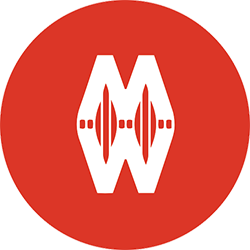The Cleveland Museum of Art (CMA) is committed to a digital implementation strategy that emphasizes building sustainable, modular systems focused on core data. We do not believe in one-off projects—all digital initiatives seek to advance the CMA’s strategic “big picture” as it supports our mission to “create transformative experiences with art for the benefit of all the people, forever.” Through our iterative process, we have never stopped improving upon our backend systems that power our award-winning digital interactives, such as ARTLENS Gallery.
Introduced on December 12, 2012, Gallery One was the CMA’s testbed for implementing an integrated backend system. What’s important about Gallery One is that the real project was not the impressive outward-facing digital interactives, but rather the middleware and systems that allowed the interactives to function. This was the CMA’s first real test of providing a single version of data which was pushed to the Collection Wall, ArtLens App, Gallery One lenses and the CMA’s main website. If we were committed to truly maintaining and scaling this project, the backend system would play the most important role as hardware can change drastically over time.
In December of 2015, the museum transitioned from its antiquated Apelles custom collections management system (CCMS) to a new, bespoke collection catalog and management system, Athena. The CMA designed and built the Athena CCMS to provide a single, shared workspace for all artwork-related functions—a true system of record for all the artworks the museum handles. The Athena system is tightly integrated with the museum’s main Digital Asset Management System (DAMS) for object photography, as well as a separate document management system and content management system for non-CMA artwork images.


In 2018, the CMA completed a substantial update to its backend system. Previously, there were five different content management systems (CMS) managing our interactives, built by four different vendors with their own way of doing things. Over the years, this caused confusion and frustration as time was spent focusing on how projects would integrate with the CMA’s systems instead of on the visitor experience.
This project established;
- a standard, well-documented development environment; including a master application programming interface (API) used for harvesting/integrating all artwork, artist/creator, and location information
- a common framework for defining and testing the content structure and staff workbenches needed to manage both existing and new interactives (in ArtLens App, exhibitions, collections online, or any future interactive)
- a consolidated content delivery network platform for digital assets for all interactives
- a single method for connecting interactives to user devices for favorites and saving of user-generated content

The CMA’s custom-built content management system pulls live content, writes it once, and then updates it everywhere, making any artwork information or interpretive content updated by curatorial, registrar’s office, or interpretation immediately accessible in all digital interactives within fifteen minutes. This integral system allows us to build engaging interactives and ties internal digital processes together.

The technology is sustainable, maintainable and scalable. The new application programming interface (API) improvements make future changes to the space more manageable for the museum. Since the interactives focus on frontend technology, they may be reproduced and replicated by other museums with API integration ability. As the CMA keeps up with new and innovative technologies, it will implement changes within its existing structure and share them with the museum world.

The digital strategy at the CMA ensures that all maintenance of hardware and software can be performed onsite by members of the CMA’s Digital Innovation and Technology Services department. We always have the most up-to-date and accurate data by managing the technology in-house and can easily report bugs to our Applications team to be efficiently addressed.

